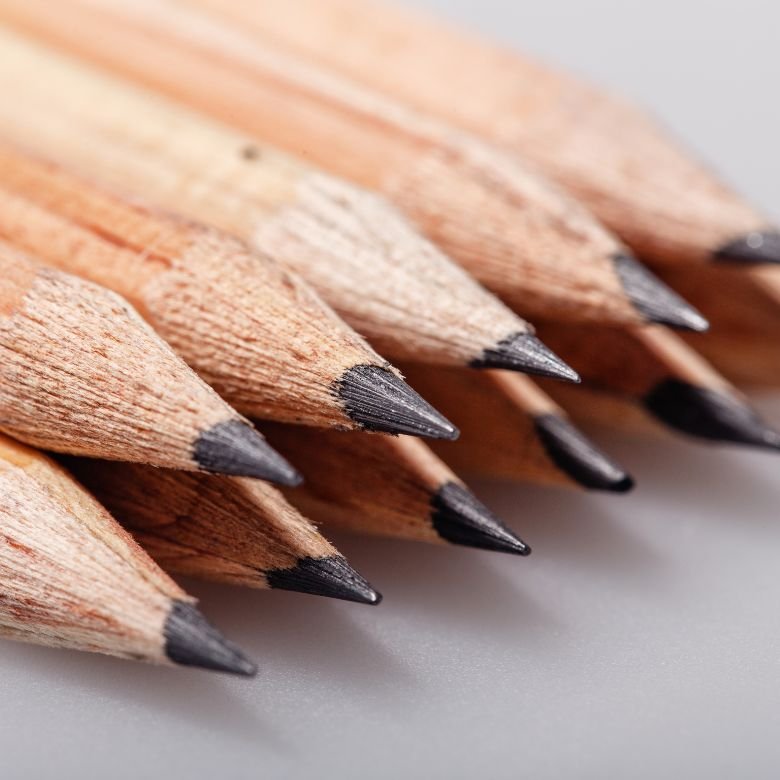When we hear the word graphite, the imagination subverts us a picture of lead (a mixture of graphite and clay), commonly used in pencils. Of course, the production of stationery accessories is not the only use of this popular mineral. In our Article we will discuss the key properties and applications of graphite in the industry and households.

What is graphite?
Let us start with the basics and answer the key question: what actually is graphite? Many laymen associate it with the so-called lead, the core of the pencil. Graphite as a polymorphic mineral is a form of carbon and, due to its structure, is divided into 2 types:
- hexagonal (hexagonal structure),
- trigonal (contains rhombohedral cells).
Graphite occurs around the world under natural conditions, in rocks such as: graphite schists and crystalline schists. These minerals can be found in the Sudetes, Carpathians and Tatra mountains, as well as in the mountains of Asia, Africa and the Americas. Scientists have also developed an artificial method of obtaining graphite by means of high temperature thermal treatment of substances such as anthracite, which have carbon in their composition. The largest graphite production facilities are currently located in China, which is also among the countries with the highest demand for this raw material.
What are the physical and chemical properties of graphite?
Black graphite with a silver, metallic shine is one of the best known forms of coal. What are the other distinguishing items? This mineral is:
- extremely soft, susceptible to breaking, crushing (in the 10-step Mohs hardness scale graphite is number 1, together with talc),
- greasy,
- compression-resistant,
- unctuous,
- odourless,
- conductive (electricity and thermal energy).
Graphite particles have lubricating properties and are resistant to acids and bases. Graphite does not dissolve in water and, importantly, does not release toxic compounds which could cause environmental contamination.
Industrial applications of graphite
Due to its specific properties, natural and synthetic graphites are of great interest to manufacturers in different industries. This mineral is used, among others, in the production of:
- crucibles, retorts and other refractory laboratory vessels,
- graphite lubricants used in the maintenance of vehicles, equipment and machinery,
- graphite styrofoam, used for the insulation of buildings,
- graphite electrodes for arc furnaces,
- pump sealants (sealing tapes or sheets),
- impregnats and anti-corrosion paints.
Fireproof graphite is also used as a reagent in chemical laboratories and as a moderator, i.e. neutron moderator in nuclear reactors. This raw material is also used as a component in the production of:
- casting moulds for metallurgy and industrial laboratories,
- parts of machinery and electrical appliances (especially those operating at high temperatures).

Graphite — household applications
As you can see, graphite has broad industrial applications. As we already know the black, tarry mineral is also an excellent material for making pencils that we use from the very early age The lead-made writing can be quickly removed from paper with a normal rubber eraser, making the pencils the best alternative to pens and ink-jet pens.
Graphite can be found in many cosmetics, such as mascaras, eyeliners and lipliners. It is also found in electronic devices we use every day – in lithium-ion batteries for mobile phones, cameras and even electric vehicles.
Interesting facts about graphite
The Greek word gráphein means: to write. The name of the mineral therefore refers to one of its main characteristics, namely its unctuousness. The first, primitive graphite pencils, were used by as a substitute for charcoal by German painter Albrecht Dürer at the turn of the fifteenth and sixteenth century.
Graphite, as a form of carbon, was described for the first time by the German-Swedish chemist and pharmacist Carl Wilhelm Scheele at the end of the 70s in the 18th century. Scheele also discovered oxygen, glycerin, chlorine, tungsten and many acids, which we still use today.
Graphite is a form of carbon. This means that it belongs to a family of minerals, which also includes diamond, i.e. the hardest stone. On the Mohs scale, diamonds occupy the highest, tenth position.
For hundreds of years soot, containing powdered graphite, has been one of the basic components of cleansers, namely pasts and other agents for the maintenance of leather shoes.
Pure, powdered graphite serves as a semi-finished product for the production of graphite composites, which are used to manufacture high-quality, lightweight, resistant to deformation tennis rackets. Graphite rackets are valued worldwide by both amateur and professional tennis players.
